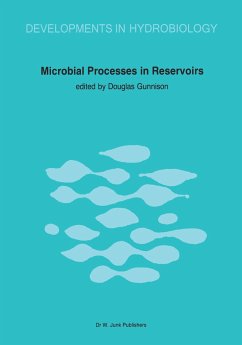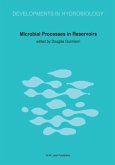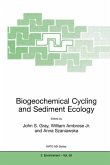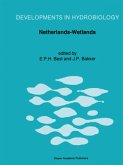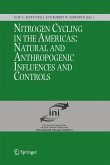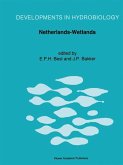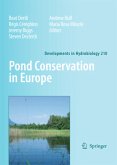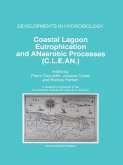The idea of producing a book on the activities of sence of bottom versus surface withdrawal all have microorganisms in reservoirs had its origins in an a bearing on microbial processes. In addition, res article published by the editor in ASM News (De ervoirs are often constructed in areas where there cember 1981, 47:527-531). Many individuals ex are few, if any, natural lakes . In this regard, reser pressed an interest in having the article expanded voirs are also often distinct from natural lakes, and into a book on this subject. Several people were that meteorologic, hydrologic, geo to the extent contacted and asked if they would be willing to logic, and edaphic factors make a difference, reser contribute chapters to the book. The interest dis voir microbiology will also be different. Finally, the played by many persons outside the area of reser creation of a new reservoir offers the sediment voir microbiology was encouraging, as was the in microbiologist a unique opportunity to view the spiration of the contributors themselves. We were transformation of terrestrial environments into subsequently approached by Dr. L. Harold Steven aquatic ecosystems.
Hinweis: Dieser Artikel kann nur an eine deutsche Lieferadresse ausgeliefert werden.
Hinweis: Dieser Artikel kann nur an eine deutsche Lieferadresse ausgeliefert werden.
`This book provides a good overview of microbial processes in the functioning of reservoir ecosystems and can be recommended for microbiologists, biologists, limnologists and students.'
Spixiana, 9 (1986)
`... the book makes fascinating reading and adds an important, previously neglected dimension to our understanding of the proliferating reservoir ecosystem. Every trainee and practising limnologist should read it, and someone should extract and interpret the guts of it for the benefit of reservoir managers and water quality engineers.'
Australian Journal of Ecology, 12 (1987)
`The book will be of most interest to engineers and biologists involved with reservoir management.'
Journal of Environment Quality, 15:2 (1986)
Spixiana, 9 (1986)
`... the book makes fascinating reading and adds an important, previously neglected dimension to our understanding of the proliferating reservoir ecosystem. Every trainee and practising limnologist should read it, and someone should extract and interpret the guts of it for the benefit of reservoir managers and water quality engineers.'
Australian Journal of Ecology, 12 (1987)
`The book will be of most interest to engineers and biologists involved with reservoir management.'
Journal of Environment Quality, 15:2 (1986)
`This book provides a good overview of microbial processes in the functioning of reservoir ecosystems and can be recommended for microbiologists, biologists, limnologists and students.'
Spixiana, 9 (1986)
`... the book makes fascinating reading and adds an important, previously neglected dimension to our understanding of the proliferating reservoir ecosystem. Every trainee and practising limnologist should read it, and someone should extract and interpret the guts of it for the benefit of reservoir managers and water quality engineers.'
Australian Journal of Ecology, 12 (1987)
`The book will be of most interest to engineers and biologists involved with reservoir management.'
Journal of Environment Quality, 15:2 (1986)
Spixiana, 9 (1986)
`... the book makes fascinating reading and adds an important, previously neglected dimension to our understanding of the proliferating reservoir ecosystem. Every trainee and practising limnologist should read it, and someone should extract and interpret the guts of it for the benefit of reservoir managers and water quality engineers.'
Australian Journal of Ecology, 12 (1987)
`The book will be of most interest to engineers and biologists involved with reservoir management.'
Journal of Environment Quality, 15:2 (1986)

